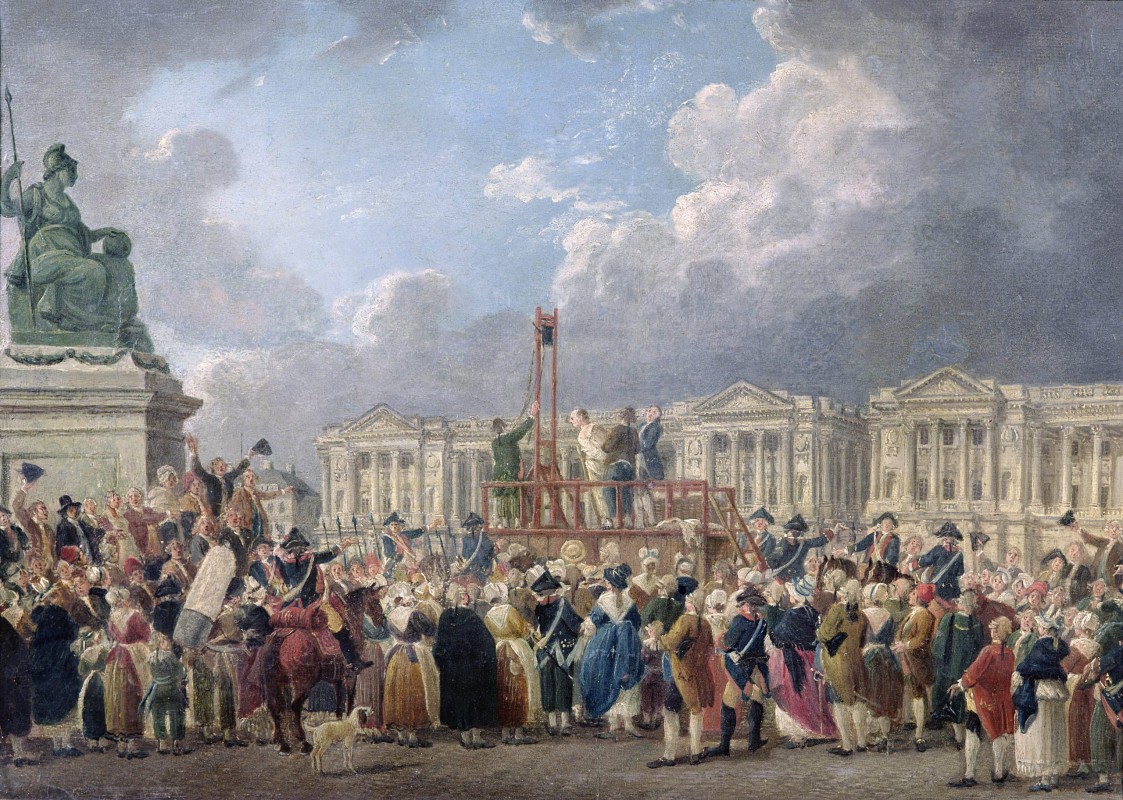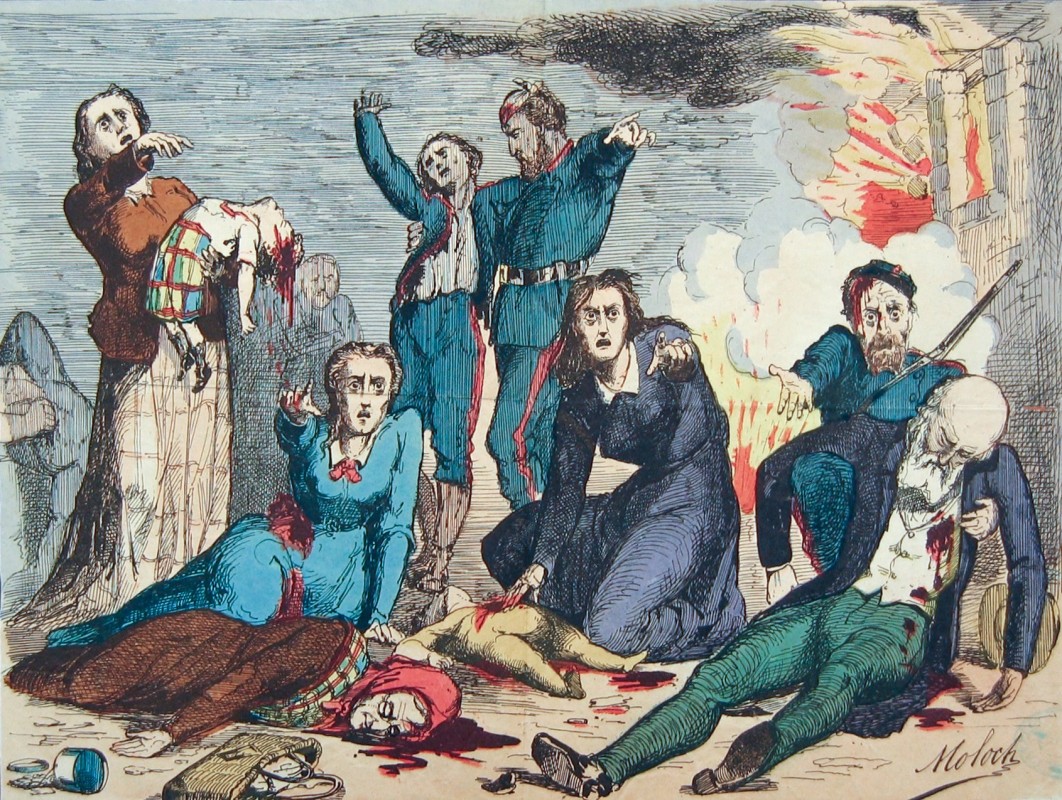How images of mass violence shape identities across French history
Professor Howard Brown explores how representations of violence create historical meaning and a sense of self

One of the most striking images of the French Revolution is the guillotine, its angled blade beheading King Louis XVI in 1793. After the following year’s Reign of Terror under Maximilien Robespierre, who then headed the Committee of Public Safety, it became the symbol of a revolution off the rails.
It may surprise you to know that more people actually died by firing squad during this period, according to Binghamton University History Professor Howard G. Brown, a scholar whose research focuses on France between the sixteenth and nineteenth centuries.
Although rarely depicted in published images, firing squads predated the guillotine, which was initially devised as a humanitarian and egalitarian instrument of execution. They also tended to be messier and lacked the guillotine’s drama and element of public display.
“We have only a couple of images of firing squads from the period. I’m trying to find what it really looked like. Did people kneel? Did they have their hats off? Were they blindfolded?” Brown wondered. “We can’t even figure that out as historians because we don’t have images.”
Brown, the author of Mass Violence and the Self: From the French Wars of Religion to the Paris Commune and Ending the French Revolution: Violence, Justice, and Repression from the Terror to Napoleon, focuses his research on France’s long tradition of political tumult, which differs sharply from his native Canada. That history of violence against the state can be traced back to the religious wars of the 16th century, which were rebellions against the monarchy as much as they were struggles between religious denominations. A series of civil wars between 1648 and 1653 called the Fronde saw the uprising of many nobles, high-level judges and key cities against the absolute monarchy, but ultimately failed.
The French Revolution from 1789 to 1802 had global impact, radiating out from Paris. By the 19th century, the capital city proved a hotbed for revolutions, some failed and some successful, including the Paris Commune in 1871. That legacy continued with unrest in May 1968 that brought the country to the brink of civil war, and the Yellow Vests protests that began in 2018 and continue to this day.
The public perception and ultimate meaning of political violence is shaped by the images that capture and broadcast events, and not just for future generations. The very term “Reign of Terror,” for example, was invented a month after the overthrow of Robespierre to describe and define the previous year, Brown said.
During that period, prison memoirs and reporting on show trials were hastily rushed into publication, relaying tales and images of rebels shot en masse by cannons and firing squads or drowned in rivers.
“All of these representations became widespread across France only a year later as a strategy by the politicians that overthrew Robespierre to justify their seizure of power and tarnish the Jacobin regime that they opposed,” he reflected. “The result is our historical understanding of the period.
Mass-produced images of terror
Brown’s most recent research has focused on representations of mass violence and how they have changed over time. In France, such imagery began with the wars of religion, which Protestant-leaning publishers used to elicit emotional responses from the viewers; it continued through the French Revolution to the Paris Commune of 1871.
During the religious wars, images were created via woodcuts or copperplate engravings. That technology persisted in the 17th century, but the combination of text and imagery was expensive; because of this, few images were contained within the 5,200 pamphlets issued during the Fronde. Prints served to denounce government repression and were deliberately constructed to evoke an emotional response, he said. Images included the agonized face of a woman being run through by a sword and, 300 years later in the Paris Commune, children cowering and masses of men shot on the barricades.
By the French Revolution, copperplate engravings became less expensive to produce, leading to a proliferation of images. Lithography was added to the technological mix after the Revolution, allowing for the mass production of images that could be quickly colored. Later, collodion photography and illustrated newspapers spread images of the aftermath of Bloody Week in May 1871, when the army crushed a Parisian rebellion, resulting in the deaths of 8,500 people.
“Representations of that in textual and visual forms were more sophisticated than anything ever seen, and include very tragic and moving playing card-sized photographs of bullet-riddled corpses that couldn’t be identified during the repression,” Brown said. “Some of them are kept in archives today, but most were circulating among the populace at the time.”
Sadly, it was the first serious documentation of the laboring classes as individuals, he said.
From 1570 to 1871, there was a radical shift in the amount of reports, documentation, text and images available that pertained to mass violence. The prevalence of imagery also brought another shift: People were increasingly able to create identities on the basis of shared faith or social class, even though they lived in separate communities.
“As historians, we know that people who lived in face-to-face communities, villages and neighborhoods belonged to small guilds and small congregations and churches. Their identities were shaped by the group to which they belonged,” Brown reflected. “They didn’t have to carry a lot of personal narrative about their arc through life because everyone in the town, village or neighborhood knew that arc.”
These relationships were increasingly replaced by images from outside the community, and transformed by social and physical mobility, education and consumerism. A more complex sense of self emerged, in which a personal narrative brings meaning to changing roles and more transient relationships.
Think of it this way: In a single day, we see more faces in person or on screens than most 16th-century villagers saw in their entire lives, Brown pointed out. Without a story to contextualize our experiences, we risk alienation — a factor that shapes not only a personal sense of self, but larger social identities.
“Going back to the Paris Commune, the emergence of a working-class consciousness was not constructed by the revolt. It was constructed by the representations and the collective memory of the repression of that revolt,” Brown explained. “A decade later, the commune’s Bloody Week had become a collective trauma for the working class.”


